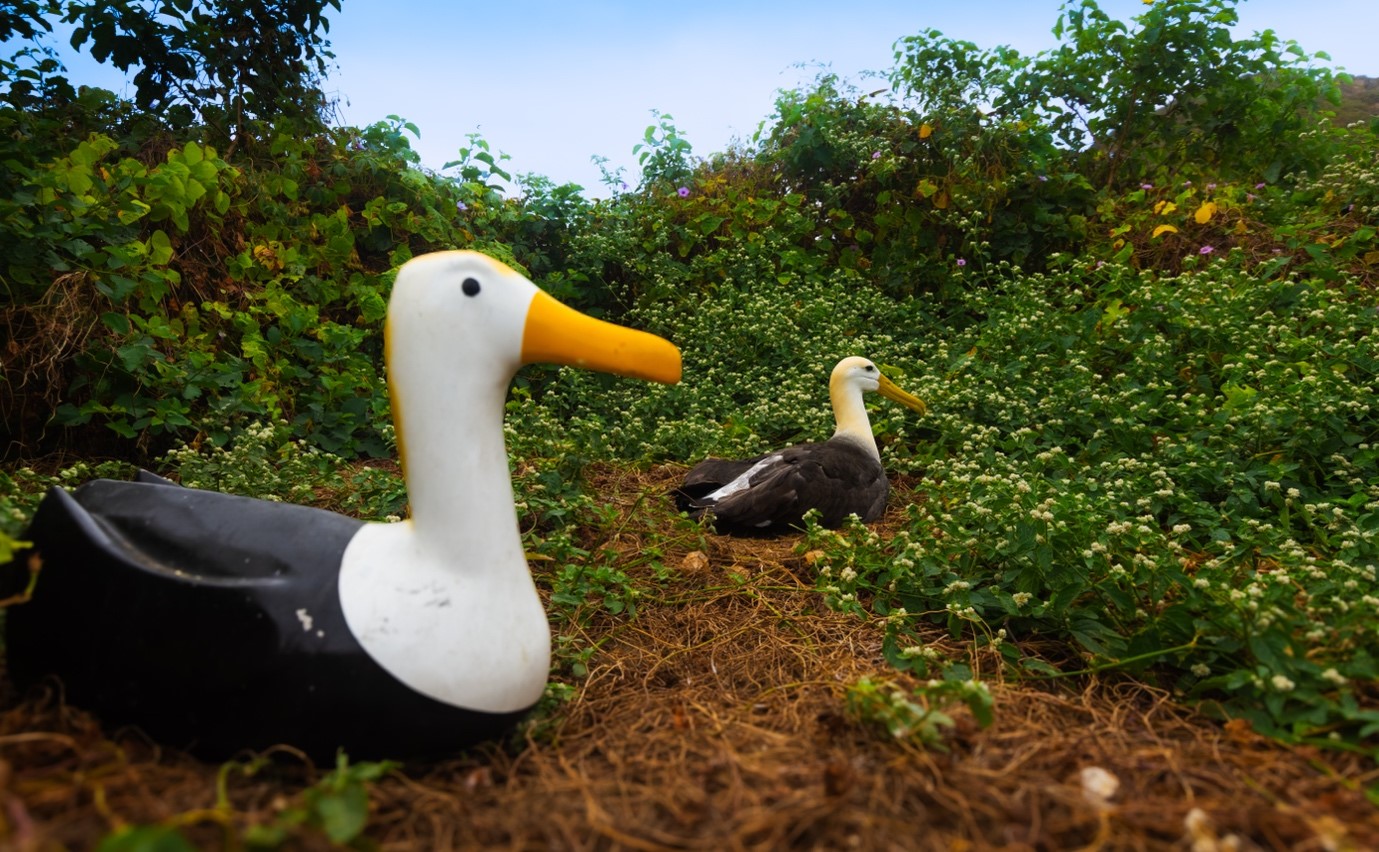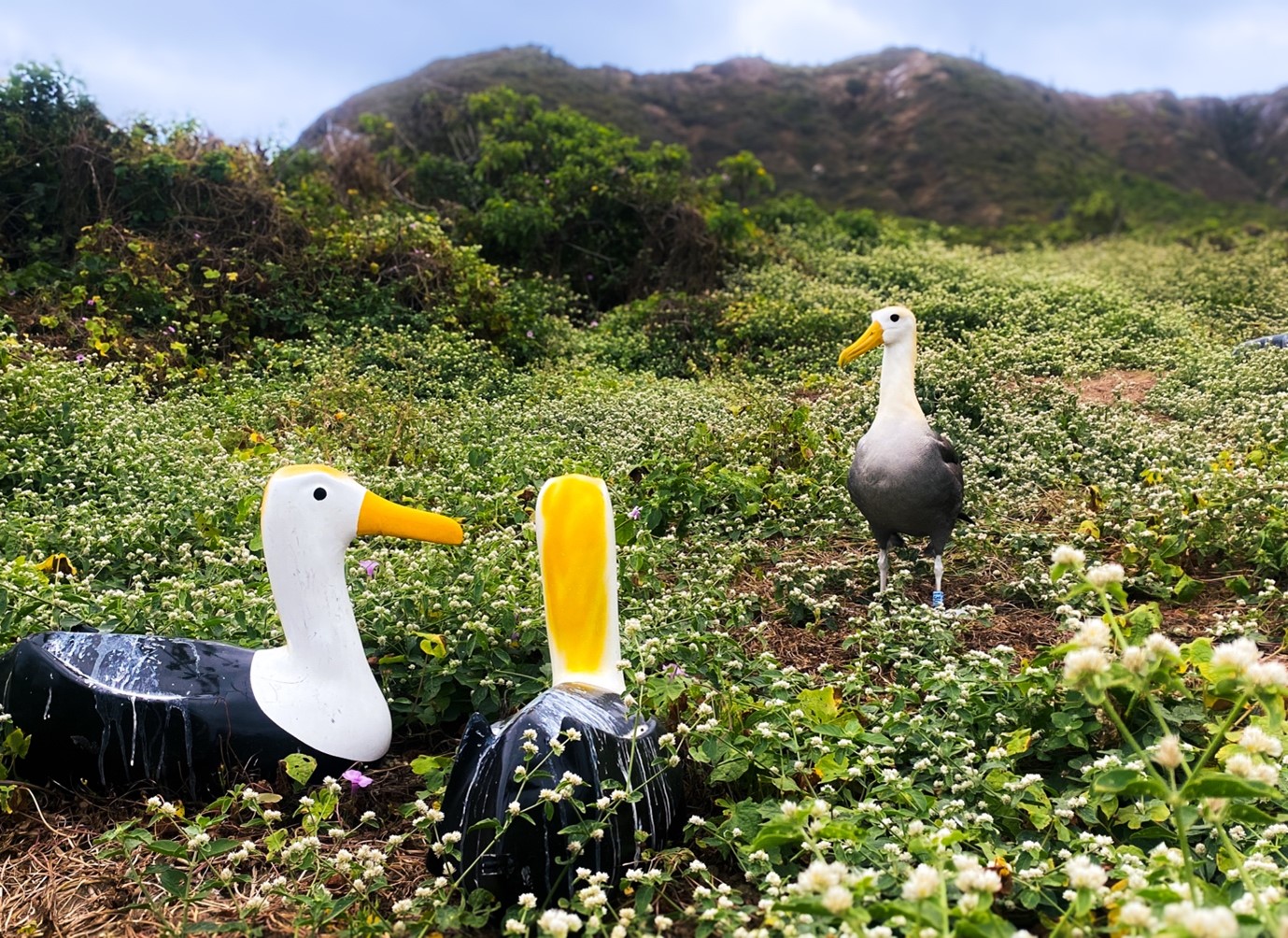
A previously banded female Waved Albatross incubates an egg near a decoy, photograph by Enzo Reyes
Dr. Enzo Reyes, Coordinator of the Social Attraction Project on Isla de La Plata off the mainland coast of Ecuador, has written to ACAP Latest News with an update on the attempt to increase the numbers of Critically Endangered Waved Albatrosses Phoebastria irrorata breeding on the island.
“At least two pairs of Waved Albatrosses are currently incubating eggs within the colony, [the] same individuals previously banded by the project team during last year’s field season. We have not yet detected any new individuals being attracted by the social attraction system,”

“One individual was observed resting beside a pair of standing decoys. It stood up and moved away when researchers approached to read the bird’s colour band. An encouraging sign that the birds are responding to the presence of the decoys as if they were real conspecifics”, photograph by Enzo Reyes
Dr. Reyes continues: “we remain very optimistic, as the system has only been operational for a few months. A promising sign is that some albatrosses are starting to interact with the visual decoys. One individual was observed resting next to two decoys, which suggests the setup is drawing attention. These early signs indicate that the project is progressing in the right direction, and continued monitoring will be essential to assess the long-term success of the attraction strategy in reestablishing breeding activity in this historic colony.”
Social attraction using decoys has been used for several other albatross species, including Short- tailed P. albatrus by Japan (Torishima and Mukojima) and the USA (Kure and Midway Atolls), Black-footed P. nigripes by Mexico (Isla Guadalupe) and the USA (Oahu, Hawaii) and for the Vulnerable Chatham Albatross Thalassarche impavida by New Zealand (Chatham Island).
What other localities lend themselves to use of decoys and/or sound broadcast systems to establish new or reestablish breeding colonies for albatrosses? The environmental NGO Pacific Rim Conservation has had a first look at the Channel Islands (Santa Barbara and San Nicolas) off California, USA for establishing new Black-footed and Laysan P immutabilis Albatross colonies. The inhabited island of Tristan da Cunha where Critically Endangered Tristan Albatrosses Diomedea dabbenena used to breed and very occasionally still visit is a possibility. Only two to three breeding pairs of Tristan Albatrosses linger on the Tristan group’s little visited Inaccessible Island, where placement of decoys might help the species re-establish a colony that was once at least a 100 pairs.
ACAP Latest News will be pleased to hear of any other existing, tried, planned or possible social attraction projects by use of decoys or other methods for any of the world’s threatened albatrosses.
John Cooper, Emeritus Information Officer, Agreement on the Conservation of Albatrosses and Petrels, 09 July 2025

 English
English  Français
Français  Español
Español